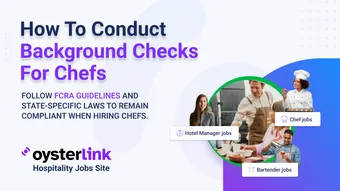Tip Pooling Spreadsheet: 3 Key Takeaways
- Automated, customizable tip pooling spreadsheets save hours each week.
- Compliance is critical - review laws, update policies, and keep thorough records in your Drive.
- Color-coding, clear policy comms, and regular training turn your spreadsheet into a tool everyone can trust.
Tip pooling spreadsheet tools can transform how you manage tips—saving hours each week, keeping you compliant, and building trust with your team.
This guide covers the practical side of using and customizing a tip pooling spreadsheet template, plus pro tips for making your payout process audit-ready.
How to Use the Tip Pooling Spreadsheet Template
Tip pooling means combining tips from shifts or the entire team so they can be distributed fairly among all team members.
Here’s how you can make the most of your new spreadsheet:
- Download – Get a trusted template from a hospitality resource site or your POS provider.
- Set up staff & shifts – Enter names, roles, and schedules; use color-coding for clarity.
- Input daily tips – Record cash and card tips; formulas calculate totals automatically.
- Customize rules – Adjust splits by role, hours, or percentage; note policy update dates.
- Calculate & review – Check shifts and payouts, confirm accuracy, and share summaries with your team.
Key Features of the Tip Pooling Spreadsheet Template
The right tip pooling spreadsheet comes with built-in tools to save time, ensure accuracy, and keep your process transparent.
- Automated calculations – Formulas instantly split tips, eliminating errors and manual math.
- Role-based distribution – Assign percentages by role and use colors for quick clarity.
- Shift & hours tracking – Record actual clock-in/out times and capture swaps accurately.
- Audit trail & reporting – Timestamps and exportable reports keep you payroll- and audit-ready.
Benefits of Using a Tip Pooling Spreadsheet Template
Why use a dedicated template? The right system pays off for you and your staff:
- Increased efficiency – Automated calculations cut payroll time by up to 80%.
- Improved transparency – Clear formulas and summaries end payout disputes.
- Easy compliance & records – Organized exports simplify audits and legal checks.
- Morale & trust – Transparent rules boost satisfaction and reduce team drama.
Customizing the Tip Pooling Spreadsheet for Your Business
Every team is different. Customize your tip pooling spreadsheet for accuracy and clarity:
- Adjust roles & percentages – Add roles, tweak splits, and use color-coding to separate FOH, BOH, and Bar staff.
- Integrate with payroll & audits – Export CSVs or sync with payroll apps for seamless reporting.
- Use version control – Add a history tab or date-stamp each period to track changes and reduce errors.
Best Practices for Managing Tip Pooling
An effective tip pooling spreadsheet is about both process and people.
Follow these practices for smoother payouts and stronger trust:
- Communicate with staff – Add a “Tip Policy” tab, walk new hires through it, and give refresher briefings after updates.
- Update regularly – Review templates on a schedule; adjust roles/percentages when staffing or sales shift.
- Stay Legal & ethical – Keep policies aligned with wage/tip laws; audit compliance each quarter.
- Support tax reporting – Clearly classify tips, link to IRS/State resources, and keep FAQs handy for staff.
Compliance & Legal Considerations
Before rolling out your system, ensure your tip pooling process is compliant:
- Limit pooling to staff who regularly receive tips (unless local law allows otherwise).
- Confirm rules on tip credit and minimum wage.
- Store records, policies, and communications for at least 3 years (or as required locally).
- Share policy changes in writing and get team acknowledgment.









Loading comments...